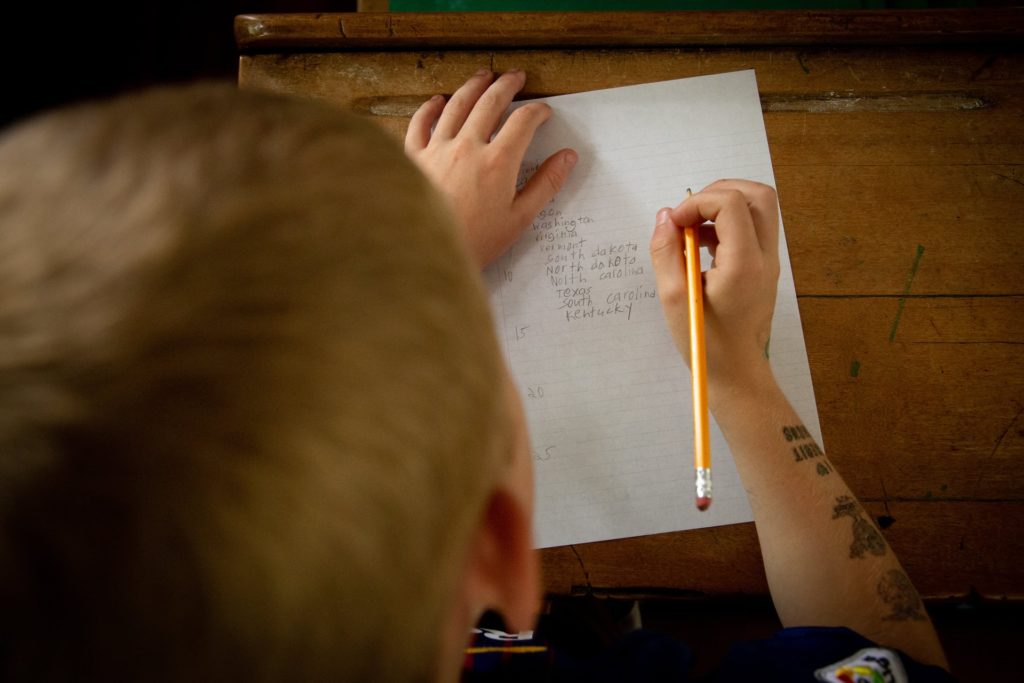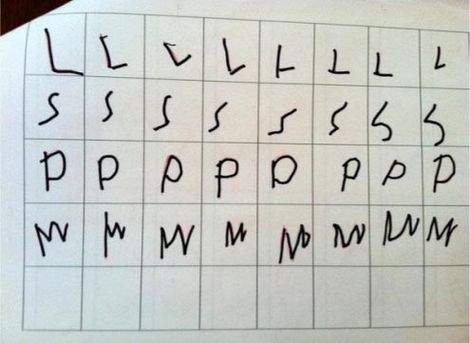Fine Motor Skills, General Information
Activities for Handwriting Skills

Why Handwriting Skills are Still Important for Kids to Learn in the Age of Computers. You seldom find activities for handwriting skills
In a world of tablets and touch screens, computer keyboards and talk-to-text apps, the need for good old-fashioned handwriting skills is fading.
Gone are the days of teachers assigning 3-5-page essays, handwritten in blue or black ink, double spaced on lined notebook paper! I can remember my hand aching during timed essay tests at school just thinking about it!
These days, kids and teachers are reaping the benefits of technology in so many ways. Typing classes start in elementary school.
Kids can type up their homework and even take notes in school on their computers much faster than they ever could write it by hand. Teachers don’t have to spend time squinting and deciphering poor penmanship on tests and reports.
Are We Losing Our Handwriting Skills?
I say all of this while tapping away at my laptop, trying to remember the last time I hand-wrote a blog post or an article! My first introduction to typing was a program called Typing Tutor that my dad brought home from work to install on our home computer, back before home computers were very common.
I was about 6 and thought it was a fun game. Now, at over 100 words per minute, I can type almost as fast as I can think.
But is there something we’re losing in turning away from the timeless skill of handwriting for kids? What losses in motor skills and coordination are our children experiencing by skipping penmanship practice?
Recent evidence reveals that the ties between developing handwriting skills and overall educational development run deep.
Not Learning to Write Properly Can Negatively Affect Academic Success
When initially learning to write,
children learn how to read more quickly, generate ideas, and retain information.
Researchers have found that children handwriting letters freehand activate three areas of the brain that aren’t activated when tracing or typing (James and Englehart 2012).
These are the same areas of the brain that are activated during reading, showing a link between a child’s cognitive ability to write and their ability to read.
The same brain imaging revealed that there is a connection between handwriting, idea-generating and working memory.
In fact, taking notes by hand may even allow students to learn and retain ideas better than typing them (Mueller and Oppenheimer).
But, if a child struggles or has messy handwriting, they can quickly fall behind in school, even at an early age!
Poor Handwriting Could be a Sign of A Learning Disability

Sure, some kids are just cursed with sloppy penmanship their whole life. But it’s worth pointing out that children who do have learning disabilities often struggle with writing.
Reading and writing disabilities, as well as attention deficit hyperactivity disorder (ADHD) and autism spectrum disorders, have all been linked to handwriting problems.
Children Who Find Handwriting Challenging Might Have Developmental Delays
Writing is a complex motor skill that combines skills like:
- fine motor control
- manual manipulation
- visual-motor integration
- proprioception
- motor planning
- visual perception
- sustained attention
- sensory awareness of the fingers
An imbalance in motor-cognitive function can cause problems in any or each of these skills. Children with Sensory Processing Disorder often have problems with these skills, so it would be expected that their handwriting would suffer.
Children with ADHD struggle to put thoughts into writing in general, but fine motor skill developmental delays are often associated with children with ADD or ADHD as well.
Without some sort of intervention like occupational therapy, studies have shown that 10-30% of school children will never resolve these coordination and development problems on their own (Feder et al).
Practicing Handwriting Can Improve ADHD and Dyslexia
Dr. Berninger of the University of Washington educational psychology department suggests that practicing handwriting – specifically cursive writing – helps a child to train self-control.
Some researchers suggest that practicing handwriting can improve dyslexia and developmental dysgraphia overall (Berninger et al).
Pre-Writing Skills Can Give Your Child a Head start
Pre-writing skills are specific techniques and writing activities for pre-schoolers that can set your child up for success before handwriting even begins.
Specifically, there are strokes and shapes that you can start teaching and practicing with your child before they start school because they are the most common strokes in the English alphabet.
Pre-writing activities would include practicing handwriting lines vertically and horizontally, crosses, diagonal lines in both directions, and triangles.
Tips to Improve Handwriting
If you’re concerned that your child’s handwriting is not up to the level for his age and maturity, you might be wondering how to improve handwriting skills.
1. Download handwriting practice sheets
There are lots of downloadable handwriting sheets available to parents. Handwriting worksheets are a great way to help your child develop the muscles and motor skills for better penmanship.
2. Purchase a few handwriting practice books
These provide tips for parents and educators to improve kids handwriting at home.
3. Consider programs like Handwriting Without Tears
These specifically focus on helping children with handwriting difficulties through fun activities. (https://www.lwtears.com/hwt)
4. Consider occupational therapy programs
Find programs that offer specific exercises for developing motor skills, proprioception, and sensory skills – all of which can improve your handwriting skills.
5. Help your child practice by alternating writing long stories or paragraphs
Verbally discuss the story or homework paragraph first. Then, take turns writing a sentence at a time with your child. It will speed up the homework process and keep it from being too overwhelming and frustrating.
6. Provide auditory feedback by telling your child to speak each word aloud as he or she writes them
Listen and encourage them as they do so.
7. Practice drawing letters in a variety of multi-sensory exercises
Use ideas like drawing in the sand, on a touch screen, a chalk or dry erase board, or in the air.
8. Use multi-sensory handwriting practice paper with raised ruled lines
These are an excellent tool to help children with their handwriting skills.
9. Use a pencil grip trainer to practice proper mature grip
For example, the Grotto Grip trainer was developed by occupational therapists to train and strengthen a mature grip on a writing utensil.
10. Strengthen the muscles of the hand in general
This can be done with stress balls, playing with Legos or puzzles, practicing button closures, threading crafts, or manipulating tweezers in games like Operation or Feed the Woozle.
As you can see, there are lots of reasons that handwriting shouldn’t be considered a relic of the past.
Backed by a wide array of recent relevant research, developing good kindergarten handwriting should be a priority for parents of young children. Not only will it help them academically, but it will also provide an early opportunity for recognizing developmental delays.
Finally, if your child is diagnosed with ADHD, ADD, autism, or sensory processing disorder, handwriting practice for kids is a great way to encourage their development and improve a wide range of their developmental and cognitive skills.
Sources:
- Developmental Medicine and Child Neurology Handwriting development, competency, and intervention. Katya P Feder, PhD OT and Annette Majnemer, PhD OT 2007
- The effects of handwriting experience on functional brain development in pre-literate children. Karin H James and Laura Engelhardt. Trends in Neuroscience and Education, 2012.
- The Pen is Mightier Than the Keyboard: advantages of longhand over laptop note taking. Pam Mueller and Daniel Oppenheimer. Psychological Science, 2014.
- Early development of language by hand: composing, reading, listening, and speaking connections; three letter-writing modes; and fast mapping in spelling. Berninger VW, Abbott RD, Jones J, Wolf BJ, Gould L, Anderson-Youngstrom M, Shimada S, Apel K. Developmental Neuropsychology, 2006.